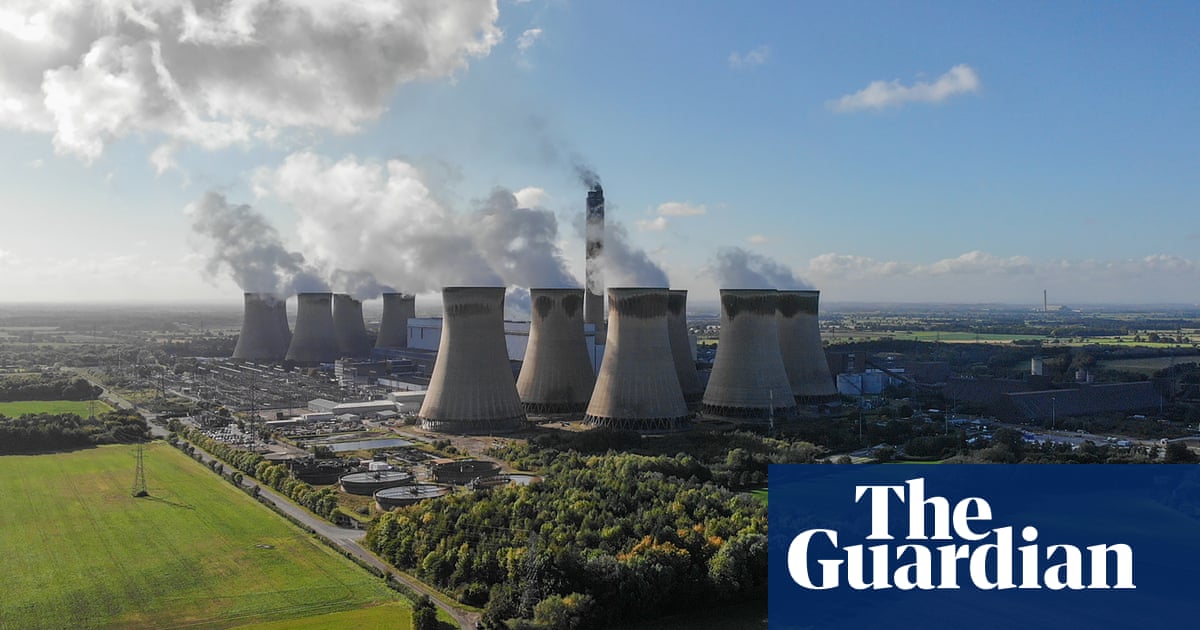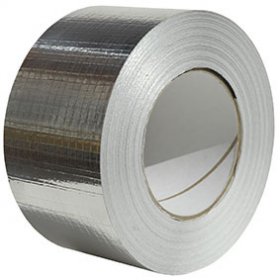The North Yorkshire power plant, which burns wood pellets imported from North America
So the trees are grown in America, processed in America and then transported across the Atlantic before getting to Yorkshire? That must use up all the carbon budget before it’s even burnt, surely?
Honestly it might not. I don’t have any actual numbers to offer here, but the sheer size of modern cargo ships often makes then surprisingly carbon efficient despite the horrid fuel they use
I really just don’t think our clean air strategy can involve “keep burning shit for energy”. Wind, water, waves, rays, and atoms yes… but not “burn shit”. Even if it’s useful shit to burn, it’s still a huge carbon release.
Biomass can in theory work fine, since the process of making the fuel (growing plants) removes carbon from the atmosphere. Unless you use fossil fuels in the process of making and moving it, it should be close to carbon neutral
If you’re okay with using forests for carbon capture, then you can just bury the wood underground. There is no justification for setting the wood on fire to generate electricity.
Well the justification is that we need to generate electricity for a number of other reasons. I’m not suggesting that biomass is better than wind or solar, but if there are other reasons that those don’t suit the needs of a specific situation then biomass can make sense since it can be carbon neutral. It is, of course, important to make sure that it actually is that
That justification holds for coal just as much as it does for the act of throwing the biofuel into the power plant. Why is it irresponsible to burn trees that died 400 million years ago but okay to burn trees that died 6 months ago?
Whether you’ve “offset the emissions” of burning the trees by growing them yourself doesn’t matter for the decision of burning the biofuel. You might as well call coal burning carbon neutral if you bury some trees underground in the place you mined the coal.
Why is it irresponsible to burn trees that died 400 million years ago but okay to burn trees that died 6 months ago?
Because the carbon in coal is currently underground and not going to get into the atmosphere without human intervention, whereas growing trees pulls carbon that is currently in the atmosphere out of it and then burning them re-releases it. One option adds carbon that was not already in the relevant system, the other does not.
But once you put the trees underground, they’re not going to get out without human intervention either…
When you’ve cut down the trees, they’ve “left the system”. What does it matter whether the carbon you add to the system from the outside comes from trees that left the system 6 months ago or ones that left the system 400 million years ago?
Yes, but if you put them underground you do not get the electricity generated. Which is the point of this.
What does it matter whether the carbon you add to the system from the outside comes from trees that left the system 6 months ago or ones that left the system 400 million years ago?
Because our baseline that we want to avoid changing the climate away from too much is a few hundred years ago, not a few hundred million years ago.
Do you only have shit takes?
the article states that drax burning wood produces four times the CO2 of radcliffe burning coal; however it fails to mention how much electricity was produced by each one. i expect better from the guardian, but we didn’t get it in this report.
Wow you’re right. It’s not talking about CO2 per MWh it’s talking about total CO2 per year. What a completely useless comparison.
Also the source of the C in the CO2 is important, rendering this comparison even more pointless.
Good point. It looks like
Its generating capacity of 3,906 megawatts (MW),
Ratcliffe-on-Soar Power Station
the station has a capacity of 2,000 MW
That is a good start, clearly crazy is nearly 2x larger in nameplate. However, it also depends on how often they are deployed.
Being that one is consider clean power it is likely dispatched more often. That would result in more numbing hours which would make the difference between the two even bigger.
I saw this article in a different sub and it seems to be just sensationalist header to drive traffic
Also, trees capture CO2 when growing, so it’s not just emitting it like carbon or petrol, it’s a cycle.
Tree farming is very good, because the trees are harvested after their peak carbon sequestration is past. Young trees clean up more CO2 than wild trees.
I mean, a biomass power station should have no net emission, that’s the whole point
Akshually… That trash wood turned into pellets would otherwise rot, which releases CO2, but also methane. And methane is considered a far more powerful greenhouse gas.
So the net is in our favor.
Standing dead forests should be made into charcoal and plowed into food fields, which is very stable stuff and the biogas used instead of natural gas in my opinion.
Fair enough, that’s not a power station tough. IMO stone weathering is a superior carbon capture process
Sensationalist headline as far as I can tell.
(I wrote the same in a different sub as this seems to have been posted all over)
Comparing carbon emissions and only telling that it is more than another plants/industrial sites, is pretty useless. It needs to be normalized to emissions/kWh so it would be a useful comparison. That alone gives me pause as to how accurate/honest the comparison is.
For example: the plant could be the largest in the country which would mean emoting more is normal. Or it could be the smallest and have a disproportionate emission rate.
It also seems like the spokesperson of the plant claims that the wood is sourced from sustainably managed forests, and though I won’t take that at face value, I see how that could further mitigate impact compared to what the sensationalist headline claims.
I don’t have time right now to do much more research on this specific site such as where the forest is, transportation emissions, processing emissions, etc. However, it is clear that the author of the article didn’t do any research either, and/or intentionally cherry picked a way to display the data to come up with an article that would drive traffic.
Additionally, The CO2 emitted from a biomass electricity generation plant isn’t new CO2 pumped out of the ground. It’s the CO2 that was already captured from the atmosphere by living things. On balance, net carbon emission is zero, since the input fuel is a net negative CO2 source.
It’s probably more complex than this. For example, every tree you remove mean less carbon capture in the world.
it depends on whether that tree is re-planted.
If you remove a mature tree and replace it with a young one, you will actually increase uptake as the growing tree will absorb more CO2 than a mature one will.
However, I agree that it is complex because you need to take a long term view and there are always risks. For example a wild fire would offsetting the equation as the young trees are more vulnerable.
Yes, the reporting is incredibly lazy. Such is The Guardian’s standards.
Drax is the largest power station in the UK. Assuming the figures in Wikipedia are in the same ballpark as the nameless report that The Guardian is referencing without citation, Drax has a capacity of 3.9 GW. Ratcliffe-on-Soar Power Station is capable of producing about 2 GW of net electricity. It’s doubtful they’re actually running either to capacity, but we can estimate that Drax produces roughly double the power as Ratcliffe-on-Soar. That means Drax is still roughly emitting double the carbon per watt.
It would be nice to know whether that figure includes biomass transport across the Atlantic…
edit: typo
You said it, very lazy
I’m not familiar with how the UK decides on dispatching order for power plants, but if they follow a similar protocol as the US where is a combination of marginal cost and emissions, I wound in then expect that the bio-mass plant (with lower expected emissions) will be dispatched more often than the coal fire power station.
That would significantly affect the emissions/kWh
Finally, like you said we would need the transportation emissions and I would ask too for info on whether the source of the wood is a sustainable managed forest. If it is, that wood has near zero emissions as the forest regrows (except for processing emissions)
Clean energy can only be wind water solar or a yet to be invented source like fusion
Clean energy can come from many things, but not from burning stuff.
Hydropower, tide-powered water turbines, osmotic power, etc can be clean.
The way its currently operating seems highly inefficient, but the point about biopower stations is that they aren’t introducing more carbon into the carbon cycle. These trees would have died eventually and returned to the carbon cycle naturally, they are just controlling the process for human power. Imagine if it was running off of a tree farm that was geographically next to the power plant, for instance.
It’s a matter of time scale. When burning wood from old trees, and planting new trees instead, and it take several decades for tree to grow old enough to compensate for what released on day 1. The emitted particules affect air quality, and emitted carbon will affect climate for decades. One of these effects is an increase in forest fire, and a burned tree cannot capture carbon.
Unfortunately we cannot wait decades to reduce emissions.
Similarly, burning fossil fuel isn’t introducing more carbon into the earth, it’ll eventually be absorbed by planctons, trees, etc and will make it back in the ground. That cycle is longer however, housands or million of years.
Sure of the first point I guess? I’m not some huge advocate of this technology, I’m just saying it’s not an apples to apples comparison where you can simply say its 4x worse.
On the second point, no. It takes 10s or 100s of millions of years for coal/oil to form. And most of the stuff we mine/drill for was formed from trees before bacteria/fungus evolved ways to break down cellulose, so dead trees just piled up. Its plausible that its never removed from the carbon cycle unless we are the ones to put it back where we got it from. It will certainly not happen on human time scales.
Fissile nuclear is clean enough. It has been smeared and misregulated through lobbying, propaganda, and donations to genuine believers among environmentalists by the fossil fuel industry. But even today uranium fuel cycle power plants produce less lifetime pollution per kWh than solar panels. Solar panel technology will improve, but so would nuclear with thorium or more technical improvements in reactor design.
Once solar panels don’t require rare earths anymore and once some new technology is developed to store electricity between peak production and peak consumption without massive pollution in quantities sufficient to meet everyone’s needs, it makes sense to phase out fission. But we’re still pretty far from that.
No its not and it uses shit loads of water that aren’t available at all times. Its not good enough to help, we shouldn’t decommission the already existing ones (if safe), but focus on stuff that is faster to scale up, like solar and wind (and maybe geothermal).
Oh and modern solar panels don’t require rare earths:
https://www.pv-magazine.com/2019/11/28/are-rare-earths-used-in-solar-panels/
I get the feeling that you are seriously illinformed about solar.
So don’t build your nuclear reactors in a place that doesn’t have shit tons of water?
Solar and wind can’t handle peak consumption without obscene amounts of heavily polluting storage. They should definitely get the majority of the attention and budget, but nuclear is still important and will still be faster to scale up faster in many specific locations. Get as much solar in the subtropics and tropics as possible, get wind in windy locations, get geothermal and tidal where that is viable, but get nuclear in places with plenty of water that are further than 45 degrees/5000 km from the equator in areas with little wind, and for peak consumption in places without hydroelectric or other power that isn’t best to keep at the max 24/7, and for quick response to fluctuations in wind and solar in places where other regulators aren’t available.
The articles you link are about experimental or niche tech, expensive or inefficient or both. Rare earths are still used in pretty much all solar panels that are actually being built. They’re also not the only form of pollution from solar panel manufacturing, transportation, installation, and recycling/disposal.
🤦
How about we don’t burn things.
At least it didn’t create radioactive carbon dust… but is that a good trade off for increasing your carbon foot print four-fold?






